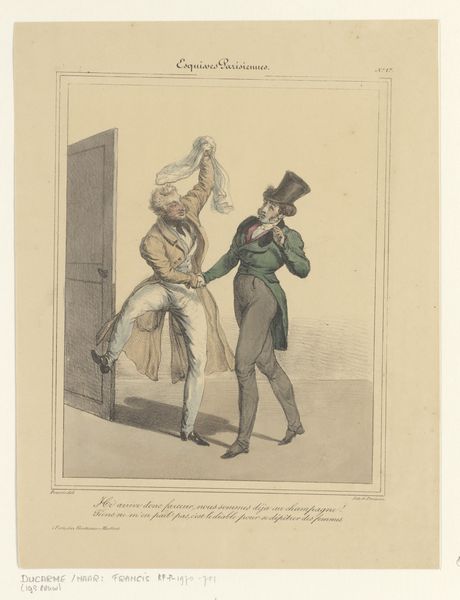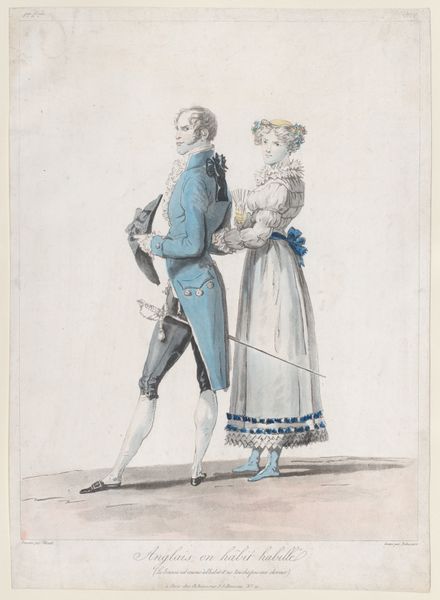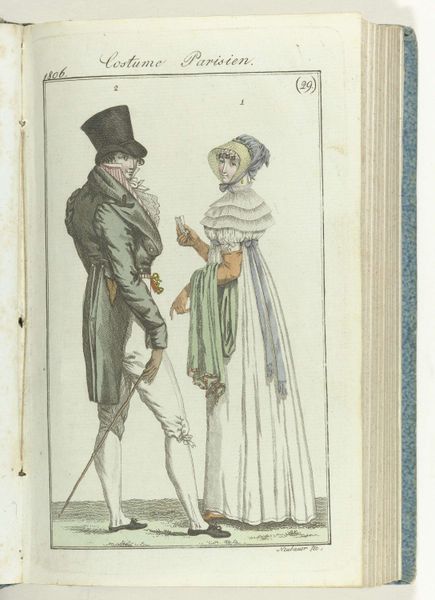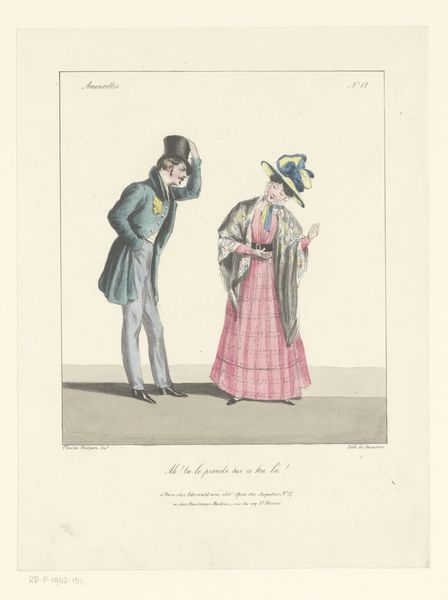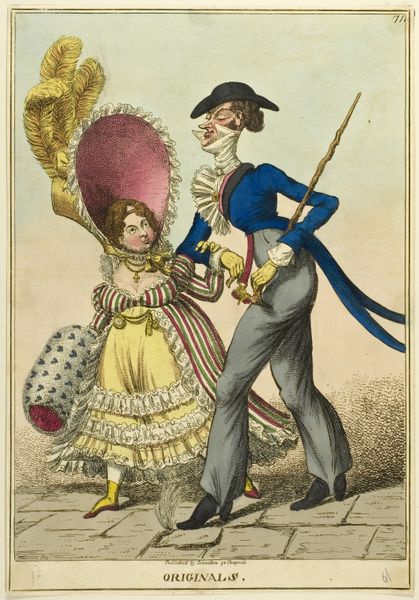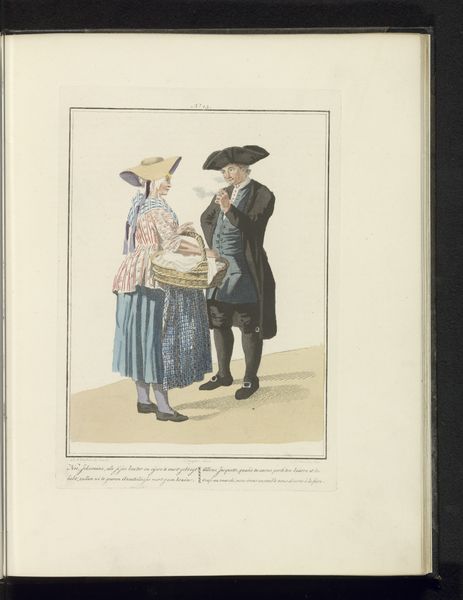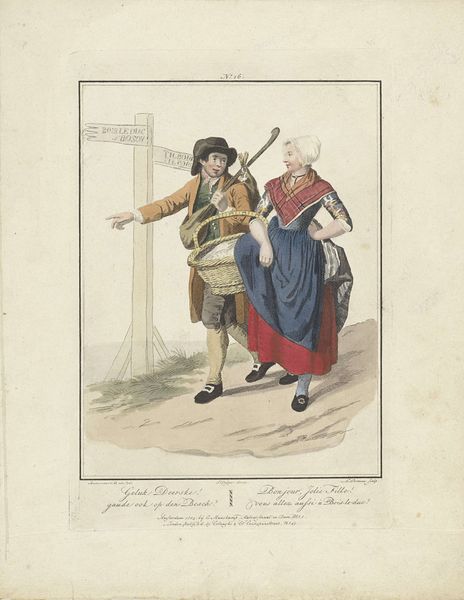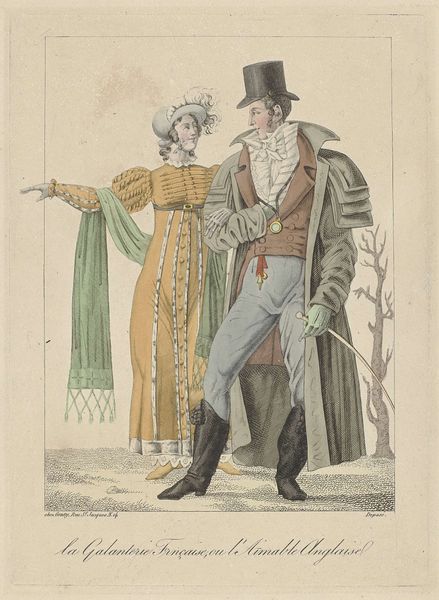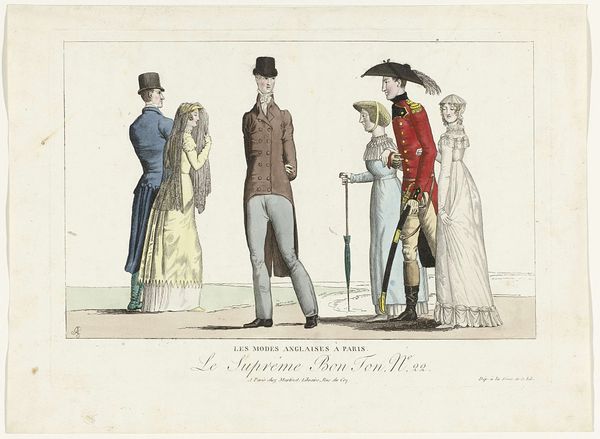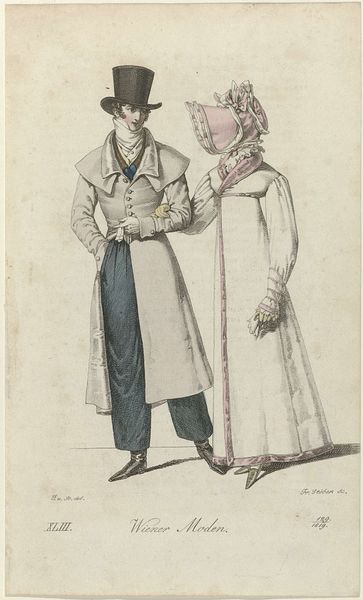
drawing, print, watercolor
#
portrait
#
drawing
#
water colours
# print
#
caricature
#
watercolor
#
romanticism
#
genre-painting
Dimensions: plate: 12 7/16 x 8 13/16 in. (31.6 x 22.4 cm) sheet: 13 15/16 x 9 1/2 in. (35.4 x 24.1 cm)
Copyright: Public Domain
Curator: This is "Buck's Beauty and Rowlandson's Connoisseur," a print executed around 1800, currently residing here at the Metropolitan Museum of Art. Piercy Roberts engraved it after Thomas Rowlandson. Editor: Oh, it's immediately striking – almost unsettling. The man, Rowlandson's connoisseur I presume, is peering so intently, quite lecherously really, through his glass at the… somewhat vulnerable woman. Curator: Rowlandson was well-known for his satirical prints. Prints like this one were widely disseminated, offering a commentary on the social mores and power dynamics of the time. Think about how easily and cheaply this image could circulate. Editor: And the contrast is so stark! He's elaborately dressed, all the finery and accoutrements of the leisure classes, the buttons, frills, and enormous wig— versus her relative simplicity. Is she meant to be read as virtuous or victimized? Curator: It's a genre scene, yes, but one layered with socio-political critiques. Roberts was himself part of this vibrant printmaking industry that democratized art. The watercolor medium hints at the illusion of a higher art form, but quickly subverted by its mocking and provocative theme. Editor: It’s the materials used too. Think about the availability of prints during this period, a way to easily reproduce and distribute commentary in society, even humor, or this dark sort of comedy. Were women the frequent subject of such…evaluations? Curator: Absolutely, often depicted either as paragons of virtue or targets of ridicule, which feeds into the politics of imagery. It speaks volumes about the male gaze and how it operated within 18th-century society, and within the art market itself. Editor: So the subject is obviously about class and access… yet the print is a tangible artifact demonstrating those power dynamics, as you noted with democratization. Curator: Exactly. This small drawing implicates the broader institutional framework, including printmaking’s own role within visual culture at the time. It almost creates an intimate and scandalous theater, that we, too, are now spectators. Editor: Very good points! It reveals not just artistic skill, but also offers a sharp critique of society's hierarchies. It’s powerful seeing art used in this kind of conversation!
Comments
No comments
Be the first to comment and join the conversation on the ultimate creative platform.
